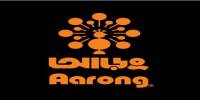Role of BTL in Marketing Communication
Marketing communication helps to develop brand awareness, which means that consumers translate product information into perceptions about the product’s attributes and its position within the larger market. Businesses also use marketing communication to retain the product’s current customer base, and to cement relationships with customers and suppliers, notes “Reference for Business.”
BTL is a common technique used for “touch and feel” products (consumer items where the customer will rely on immediate information rather than previously researched items). BTL techniques ensure recall of the brand while at the same time highlighting the features of the product.
The terms ‘below-the-line’ promotion or communication refers to forms of non-media communication, even non-media advertising. Below-the-line promotions are becoming increasingly important within the communications mix of many companies, not only those involved in FMCG products, but also for industrial goods and other purposes as well.
Marketing Communication
“Marketing communication (MarCom) is a fundamental and complex part of a company’s marketing efforts. Loosely defined, MarCom can be described as all the messages and media you deploy to communicate with the market. It includes advertising, direct marketing, branding, packaging, your online presence, printed materials, PR activities, sales presentations, sponsorships, trade show appearances and more.”
For BTL Communication, we can define it as
“The terms Below the Line communications, refers to forms of non-media communication, even non-media advertising. Below the line promotions are becoming increasingly important within the communications mix of many companies. Below the line sales promotions are short-term incentives, largely aimed at consumers. With the increasing pressure on the marketing team to achieve communication objectives more efficiently in a limited budget, there has been a need to find out more effective and cost efficient ways to communicate with the target markets. This has led to a shift from the regular media based advertising. In other words, below-the-line sales promotion is an immediate or delayed incentive to purchase, expressed in cash or in kind, and having only a short term or temporary duration.”
Airtel Bangladesh Ltd. at a glance:
Airtel Bangladesh is a cellular operator in Bangladesh. It is the last cellular operator entered in Bangladesh till today. Previously it was Warid Telecom. In 2010, Warid Telecom sold 70% of its share to Bharti Airtel for $300 million and Bharti Airtel took the management control. The rest of the portion was bought by Bharti Airtel in 2013 and before that it was approved by Bangladesh Telecommunication
Regulatory Commission (BTRC). After that Airtel Bangladesh is one of the fastest growing mobile operator in Bangladesh which focuses on the young generation.
About Airtel Bangladesh Limited (ABL)
Airtel Bangladesh Limited is one of the fastest growing mobile services providers in Bangladesh and is a concern of Bharti Airtel Limited, a leading global telecommunications services provider. The company offers a wide array of innovative mobile services, including voice, value added services, data and m-commerce products and is focused on expanding its state-of-the-art mobile network both for coverage and capacity.
About Bharti Airtel
Bharti Airtel Limited is a leading global telecommunications company with operations in 20 countries across Asia and Africa. Headquartered in New Delhi, India, the company ranks amongst the top 4 mobile service providers globally in terms of subscribers. In India, the company’s product offerings include 2G, 3G and 4G wireless services, mobile commerce, fixed line services, high speed DSL broadband, IPTV, DTH, enterprise services including national & international long distance services to carriers. In the rest of the geographies, it offers 2G, 3G and 4G wireless services and mobile commerce. Bharti Airtel had over 324 million customers across its operations at the end of March 2015.
History
In 1989, Bangladesh Government allowed private sector participation in Telecom sector as BTTB was unable to give the service to the whole country. Pacific Bangladesh Telecom Limited (PBTL) or now Citycell and Bangladesh Telecom were the first to get license as the mobile operator. Before that, Bangladesh Telephone and Telegraph Board (BTTB) was the only telecommunication service provider in Bangladesh. Along with that Sheba Telecom got license too to operate in 199 upazillas. Citycell was operating under CDMA. In 1996 more four operator license was auctioned and Grameen Phone got one of the licenses. Grameen Phone was the first to introduce GSM technology in Bangladesh. GP began its operation in March 1997. Along with GP, Aktel and Sheba Telecom took two licenses which are now known as Robi Axiata and Banglalink. In 2001, BTRC formed Telecommunication ACT eradicate any type of discrepancy in the Telecom Sector. Moreover in 2002, Information and Communication Technology (ICT) Policy was formed. In 2004 the first state owned cellular operator was introduced and the name given it was Teletalk.
Orascom and Egyptian company bought Sheba telecom in 2005 along with that a Japanese Company NTT DoCoMo acquired 30% of Aktel in 2008. Before that Warid Telecom was introduced in 2007. In the late 2009 Grameenphone went public and in early 2010 Bharti Telecom acquired 70% of Warid Telecom and in 2013 Bharti Airtel acquired the whole or Warid Telecomm Along with that Aktel rebranded as Robi Axiata in 2010. In 2012 3G service was introduced by Teletalk. In the session of 2013, 3G auctions held for other operators and finally 64 districts are covered with 3G by Grameenphone, Banglalink and Robi.
Operational Network Organogram
In Airtel Bangladesh the organogram lies in three levels and they call it Bands. These levels show the hierarchy and each Band defines their compensation package and benefits which will be provided to the employees under these Bands.
Along with these Bands, there are two more Bands at Airtel Bangladesh Limited.
They are:
Band F: Consists of Senior Executive as well as Executive.
Band S: Consists of Senior Officer, Officer and Young Leaders (YL).
Market Share
In Bangladesh, Airtel Bangladesh Ltd holds 8.18 million subscribers and holding a position of 4th among the 6 operators. On the other hand GP has 52 million subscribers, Banglalink has around 32 million, Robi has 26.28 million, Teletalk has 4.04 million and finally Citycell which has 1.24 million subscribers.

Figure – Market Share of Mobile Operators in Bangladesh
Vision and Tagline
“Enriching lives means putting the customer at the heart of everything we do.
We will meet their needs based on our deep understanding of their ambitions, wherever they are. By having this focus we will enrich our own lives and those of our other key stakeholders. Only then will we be thought of as exciting, innovation, on their side and a truly world class company.”
We can assume from the above vision and tagline that Airtel always focuses on their brand name, logo and color. Airtel Bangladesh always wants to give the first priority to their customer and wants to satisfy their customer. Airtel Bangladesh wants to give the brand “Airtel” another meaning which is „exciting, innovation and world class.
Marketing Communication of ABL:
Marketing Communication of ABL plays a very big role to reach in the consumers‟ minds. As the Head of MarCom says, “MarCom works as a mirror for the people. They can see and feel the real services provided to them through the communications done by us.”
In addition to that, for ensuring the proper communication and reaching well to the people BTL Communication plays the most vital role. In the words of BTL manager, “In order to acknowledge the proper communications in a proper way and making the use of it to its fullest, Below the Line Communication is the key player.”
The jobs to be done by BTL, is a continuous process in ABL. As we know, the industry itself is very competitive; almost every moment there is something to be informing to the customers. As the BTL and Trade manager of ABL Md. Rafiqul Islam Shiplu who was my direct line manager, needs to put his best efforts to make everything flawless. His job descriptions (JD) are the following:
- Collecting all the promotional communications from different marketing wings.
- Collecting the requirements of the communication, how they want to show it to the people.
- Briefing different agencies about the requirements.
- Collecting and checking the art works given by the agencies.
- Cross matching the art works and the requirements given from different wings.
- Budgeting and costing for the art works to preparing those on board.
- Calling different printing agencies as per requirements to fulfill the job.
- Checking the quality of the samples given by the printing media.
- Ordering the quantity and mentioning the delivery time frame as per requirement.
- Making sure the POSM are handed over on due time to the Warehouse.
- Arranging different events; costing and budgeting for them.
As ABL always tries to do something different in the market, almost whole year they arrange different events to connect them to the mass media. I was assigned to help him to fasten the work place and given the opportunity to work as an intern under BTL Communication in the MarCom department of Airtel Bangladesh Limited.
Role of BTL in Marketing Communication
A business may have developed terrific products and put together a supremely talented management team, but ultimately success hinges on persuading significant numbers of customers to select that company‟s products or services rather than buying from someone else. Growing a business comes down to the ability to sell.
Innovative strategies, a comprehensive understanding of consumer behavior and aggressive communication of the company‟s message combine to bring about sales success and that is the significant character for Marketing Communication.
The aim of BTL communication is to develop private relationship with the customer, and to inspire them to speak to us. Only then the communications can bring the actual success for the organization.
There are many definitions of below-the-line. Basically, these definitions can be divided into two groups. According to the first one, every kind of non-classical advertising tool, that is not press release, TV, cinema, radio-spot or public advertisement, can be mentioned among below-the-line tools. The second one puts the emphasis on agency commission, and declares that every kind of marketing activity that does not contain commission is part of marketing below the line. It is important to note that each explanation highlights those marketing tools that are not part of the below-the-line group. However, the characteristics of these definitions can easily picture the variety and great number of possibilities of below the line marketing.
We can examine marketing tools in a way that whose property the applied mediums are. In this case, we can differentiate three groups.
Above-the-line media: the applied media during the communication is private property. As TV commercial, radio spots, press release, billboards, and other public place tools.
Provisional media: the advertising tool is public property, meaning direct marketing (DM).
Below-theline media: medium is the property of the advertiser, meaning point-of-sales materials/point-of-purchase (POSM/POP) tools, coupons, etc.

Figure – ATL, TTL and BTL Flow
Nowadays more advertisers are choosing mass media tools for their products or services. They do not use below the line activities. From the above figure we can see the real scenario that helps to reach customers properly with adequate information. It is not always beneficial to use intense television, radio, newspapers or billboards advertising in case of purpose of selling or introducing products. Applying other marketing tools is only possible if the ATL campaign has not used up all the available financial resources for advertising. At the same time, many companies consider ATL tools a better option, because they cannot reach the necessary advertising frequency required for the desired effect. Lots of people think that another, advantage‟ of ATL communication is that more customers can be reached during a campaign therefore the cost of 1 contact is absolutely less than that of a BTL campaign. This can be true in general, but an important difference is that ATL communication has bigger number of standard deviation while in the case of BTL media the target is substantially more accurately reached. Also at below-the-line the customer encounters the tools where the purchasing decision is actually made. People can easily look through those advertisings on TV, radio, press or in public area billboards, so tools appearing in shops with reminding effects can highly contribute make a positive purchasing decision. At the same time, it is worth to mention that patronizing a below-the-line campaign with traditional ones can make it even more effective.
There are some cases, where the Below the Line tools play effective role for MarCom than the traditional advertisements. Reasons can be:
- Easier selection, more accurate reaching of the target group
- More controllable hence cost effective
- Creates opportunity to meet directly with the product/service (sampling, event marketing)
- Interactive, meaning that it makes customers act
- Determining the exact target group makes communication more personal
- Effectiveness can be measured easier by BTL
- Gives unique opportunities in making differences from competitors
- Brand-supporting
BTL Communication of ABL
Telecommunication companies market their products and services to consumers, business customers and other service providers. Marketing techniques vary for each sector. The aim of telecommunication marketing is to generate the highest level of revenue from your network and strengthen customer loyalty. In consumer markets, focus on selling bundles of products to customers, while in business sectors, and aim to build strong relationships as a channel for marketing additional services.
By properly executing the communications to the end users BTL helps ABL to fulfill the targets as a whole. Without the clear understanding of all the stakeholders the planning will see the face of the failure. By ensuring the exact placement with the same message in the whole country BTL helps to make the understanding clear to all.
Introducing any package or promotional offers, very firstly go through to every channel by the assistance of this crucial wing of MarCom. Otherwise, selling any kind of service to the customers may fail; also the standard of the communication may vary to the different ends causing confusion in the minds of the customers. Maintaining the Airtel quality in the whole country has only being possible for BTL as not a single communication can pass through without clarifying this stage.
For every trade promotion, new offer or outlook coming in the market BTL prepares the countrywide team to adopt the value and convey it in the top of minds of the customers. Hence, we can say like any other organization BTL is contributing the most value and counted as heart of communication for ABL.
Conclusion and Recommendation:
Airtel is a telecom service providing company where customer satisfaction is both goal and marketing tool. Today‟s customers in the telecom industry, where lots of offers are available, are harder to satisfy. They are smarter, more price conscious, more demanding, less forgiving and they are approached by many more companies with equal or better offers. The challenge is not only to produce satisfied customers also to produce loyal and delighted customer in this competitive and customer driven market. As the mobile connection price, call charge, even the price of the handset have been reduced due to technological advancement people of all income level are started using cell phone. Therefore, the entire MarCom team needs to work accordingly to grab this opportunity. Every wing of marketing team as well as the BTL needs to put more efforts to make it happen.
The opportunity to work here as an intern given me a chance to have a better look inside the organization. In most of the cases MarCom depends on one single agency and as there are too many work pressure with different events going on, the works get delayed. Also, I felt there is lack of inter department communication which can be a big threat in future.
As one of the biggest telecom companies in the country they should also try to give better network support to their customers which will obviously put a positive impact on every department working here. A good number of satisfied and trusted customers can bring the position up for this organization.
















